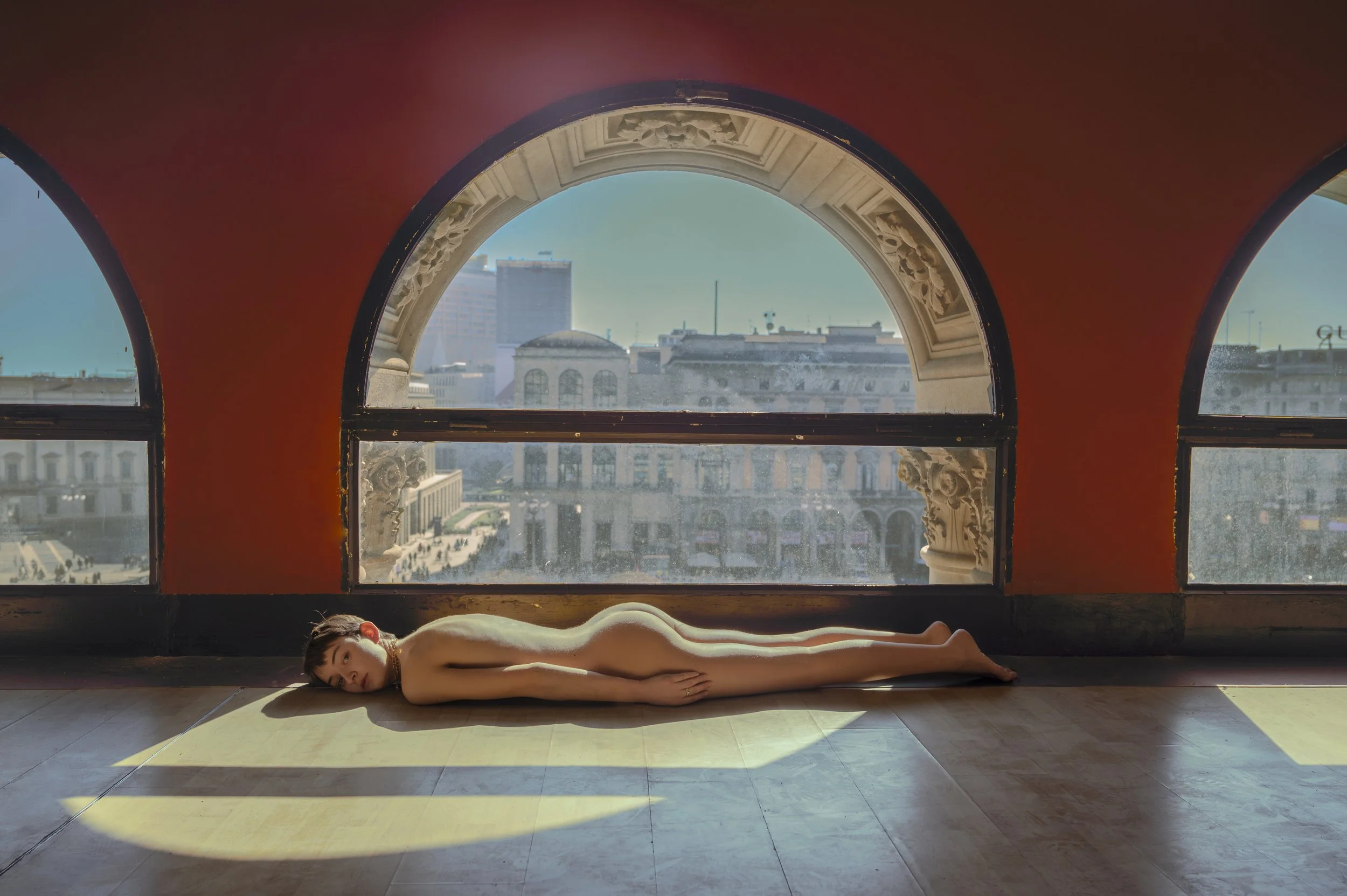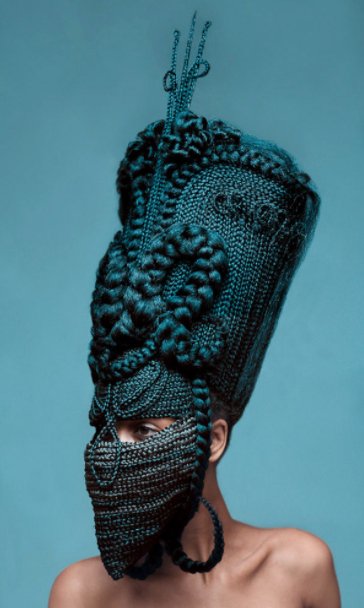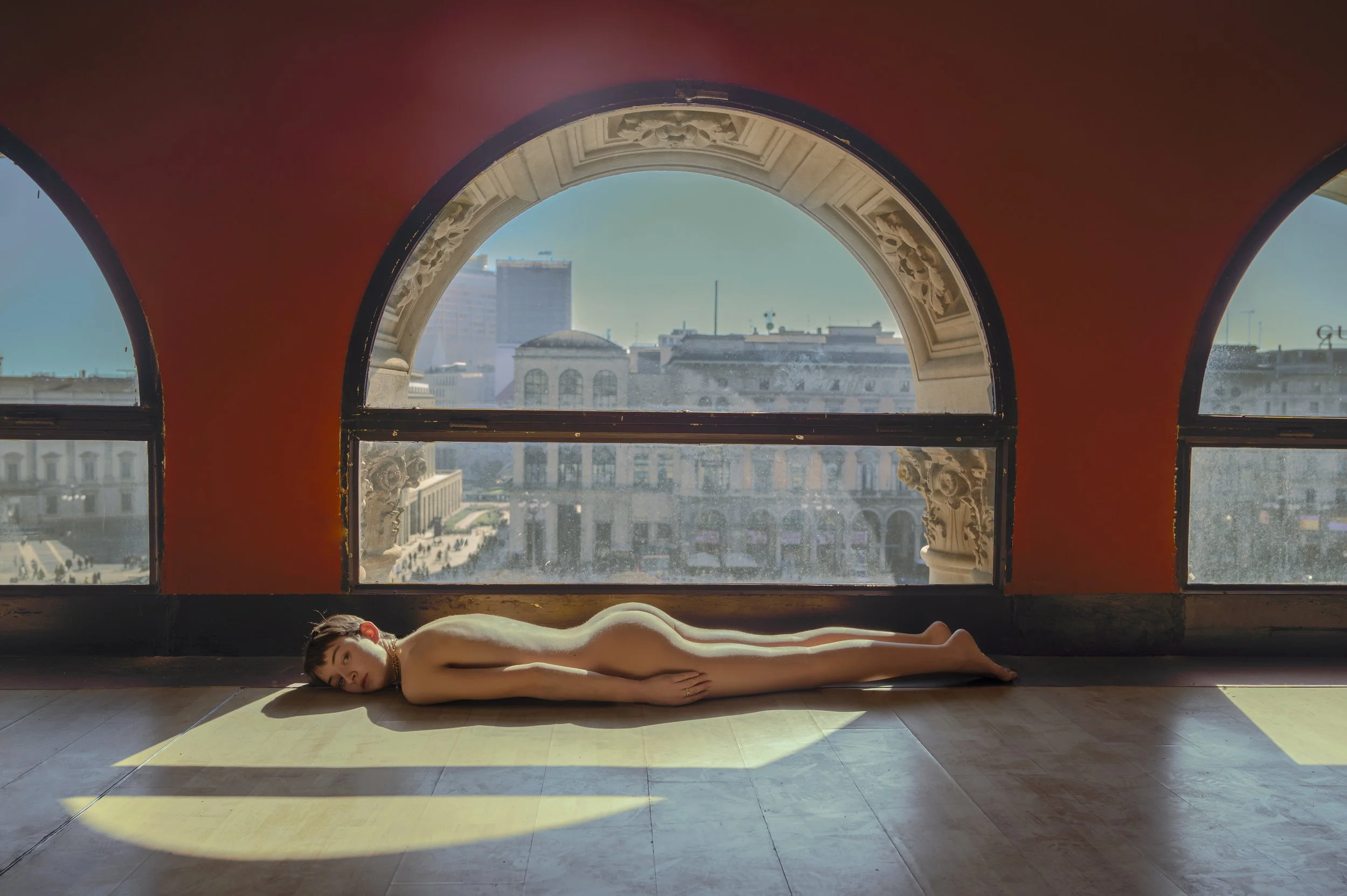Parallel Lines: journeys
The Island, Federica Belli ©
By Federica Belli
There is something extremely radical about claiming to be a photographer. I realized this as soon as I declared to be one for the first time some years ago. Before even having time to finish that sentence I had been dreaming of saying for years and years, I already realized that I would never take a photograph with the same ease again. Suddenly, every image captured by my camera would no longer be a pastime, a child's game materialized by a photographic sensor; it would be a declaration of importance, a declaration of importance as much of what I would photograph as of the act of photographing itself. The utterance of that sentence had somehow elevated photography to the holy language in my brief life; I no longer had any right to abuse it or use it irresponsibly. In a way, everything I would capture with my camera from that moment onwards should have adhered to a manifesto of my own, except that, at the young age of twenty-one and straight out of university, I firmly believed that my manifesto was still far from being stable and admirable. Looking back, to be honest, I would rather see a brave young woman, torn between knowing herself well and fearing that she had no purpose in the world; but what is certain is that if my creed was so obscure to my eyes, through the camera, it immediately took shape. Perhaps for this reason too, I never really got to predict what I would photograph before I was in the moment of doing it, beyond some vague sketches I would carry around with me all the time. The work of a photographer, in my eyes, consists of starting from a blurred idea and filling the space inside its edges, transforming it into a readable content; in a way, the process consisted of making it comprehensible to my eyes (and, I hoped, to the eyes of others), something that until then was only an inexplicable psychological presence. And how do you translate visually such psychological presence, which by its very nature was formless and inexplicable through words? With a combination of form and colour. An intoxicating presence of colour, combined with an unsettling absence of lines. After all, no matter how architectural photography insists on discussing lines and geometry, photography transcends the line by its very nature. Now much more a part of a digital reality than our physical reality, photography roots its existence in the pixel, in the point. And rooting its existence in a dot means rooting it in perception; it means rooting it in sensations, in emotions, unabashedly eschewing rationality and analysis. Precisely because of this, by moving away from the realm of science – after all, since the belief that photography can be an objective representation of our reality can be considered outdated as well as erroneous from its premises already, everything that photography shares with science lies perhaps in part of the experimental process – contemporary photography decisively places itself in the realm of the arts, of sensations, concerning the soul rather than the physical.
Cornerstone, Federica Belli ©
But as soon as my mind realized such estrangement from the field of science and such belonging to contemporary art on the side of photography, a new sense of responsibility took shape. If photography really is an art, if I really had just declared that I am a photographer, if no one really came up shouting that no, you're really not a photographer, dear, if these people I spoke to rather smiled and nodded and maybe I did fool them, then I deduced that I logically should have been an artist too. This, however, confused me somewhat. With a degree in Economics and Management on my shoulders, how could I have convinced myself that I was really qualified to call myself an artist proudly? How could I have convinced myself that I was really qualified to take other humans by the hand and guide them to discover what they did not really want to see about themselves and their fellow human beings? That for me was the role of the artist, and I still perhaps believe it is. And, with that fear – taught to every female human being – of not being qualified enough, I had just self- proclaimed I occupied that role. Shame on me, shame on me. To define myself as something I didn't feel ready to be... For a few days, I plunged into a whirlwind of inconclusive thoughts, those thoughts typical to those who try to be rational but don't quite have enough information to be yet, and thus get lost in a whirlwind with no rhyme or reason. Then, suddenly, I made a promise to myself: from that day, I would invest all my energy and every free moment in training myself, refining my eye, elevating my knowledge, and ensuring that by claiming to be a photographer – and therefore an artist – I would not deceive anyone, least of all myself.
And here we are with Parallel Lines, reading what the most brilliant minds concerned with Contemporary Art have to say about photography, discovering the hardships behind their biggest discoveries and the thoughts which led to their revolutionary initiatives. I am hoping you are all growing alongside this adventure across fine-art photography as much as I am; I am far from stopping this quest.









